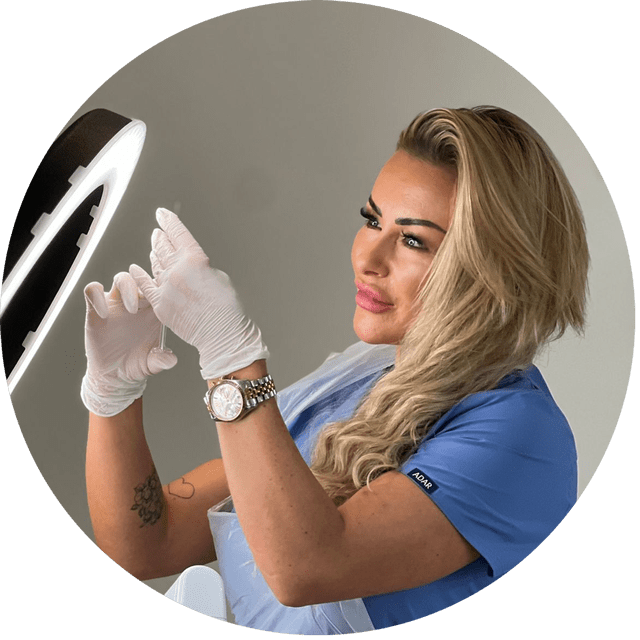In relation to injection techniques in the head and neck, including high-risk areas, there are many ways the vascular system functions.
The circulatory system, also known as the vascular system, comprises vessels that transport blood and lymph throughout the body. Arteries and veins play a crucial role in delivering oxygen and nutrients to body tissues while removing waste matter. The circulatory system consists of three main components: the heart, which is a muscular organ responsible for pumping blood, blood vessels (including arteries, veins, and capillaries), and blood itself, composed of red and white blood cells, plasma, and platelets.
The face, head, and neck are highly vascular areas, containing arteries, veins, lymph nodes, blood vessels, and capillaries. In the face, the facial and trigeminal nerves are significant. The facial nerve provides motor connections for facial muscles, enabling expressions, while the trigeminal nerve serves as the primary source of sensory stimulation. The trigeminal nerve branches into the ophthalmic nerve, maxillary nerve, and mandibular nerve, supplying sensory information to various parts of the face.
In the head, there are twelve sets of cranial nerves, and in the neck, eight pairs emerge from the spinal cord through the cervical vertebrae (Seunggu Han et al, 2023). Due to vascular structures beneath the skin, certain areas of the face are at higher risk during injections, with potential complications such as arterial/venous occlusion leading to ischemia and necrosis or loss of vision (Brennan, 2014).

Key vessels to avoid during injections are identified, including the cheeks, glabella, nasal ala, and temples. These areas contain arteries such as the facial artery, transverse facial artery, buccal branch of the maxillary artery, infra-orbital artery, Zygomatic branch of the lacrimal artery, Supratrochlear artery, Supraorbital artery, and others.
The nose, especially the nasal ala, poses a high risk due to arteries like the dorsal nasal artery and angular artery. Injecting near the alar groove can lead to complications such as necrosis of the nasal ala, nasal tip, nasolabial fold, and upper lip (Emer and Waldorf, 2011).
Careful attention is required when injecting in the peri-oral area, temples, melolabial folds, jaw, and chin. The practitioner needs to be aware of arteries, veins, and nodes in these areas to avoid complications. Special caution is advised in the chin area, where the mental artery and vein lie near the mental foramen. The infraorbital foramen near the eye troughs contains the infraorbital artery and vein, requiring careful injection techniques to prevent damage and potential blindness.
Knowledge of anatomical structures beneath the skin, careful aspiration, and consideration of injection tools such as cannulas are essential for safe aesthetic practices. Despite some controversy over the reliability of aspiration, understanding the potential risks and anatomical nuances is crucial for aesthetic practitioners to ensure the safety of their clients (Goodman et al., 2022).
In summary, comprehensive knowledge of the vascular and nervous systems, along with a thorough understanding of anatomical structures, is fundamental for safe and effective aesthetic practices. Continuous education and adherence to best practices contribute to the overall safety and success of aesthetic procedures.
Sources:
Brennan (2014), Avoiding the “Danger Zones” When Injecting Dermal Fillers and Volume Enhancers, PSN Aesthetic Department, American Society of Plastic Surgical Nurses, National Library of Medicine https://pubmed.ncbi.nlm.nih.gov/25188847/
Emer and Waldorf (2011) cited from Brennan (2014), Avoiding the “Danger Zones” When Injecting Dermal Fillers and Volume Enhancers, PSN Aesthetic Department, American Society of Plastic Surgical Nurses, National Library of Medicine
https://pubmed.ncbi.nlm.nih.gov/25188847/
Goodman et al (2022), Aspiration Before Tissue Filler—An Exercise in Futility and Unsafe Practice, Aesthetic Surgery Journal Queensland Brain Institute,
https://www.ncbi.nlm.nih.gov/pmc/articles/PMC8670299/
Seunggu Han et al, (2023), The 12 Cranial Nerves, Healthline,
https://www.healthline.com/health/12-cranial-nerves
John Hopkins Medicine (2022) Overview of the Vascular System, John Hopkins University
https://www.hopkinsmedicine.org/health/conditions-and-diseases/overview-of-the-vascular-system





